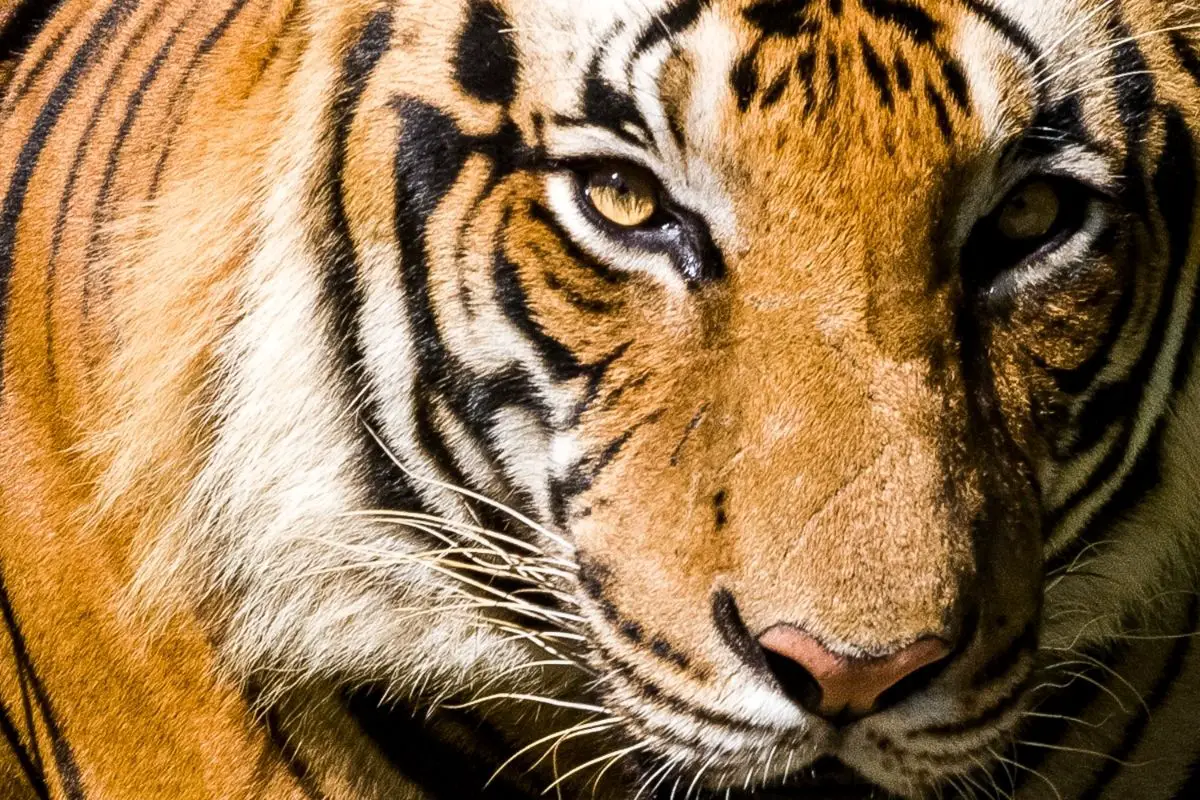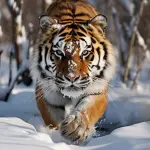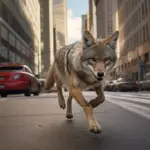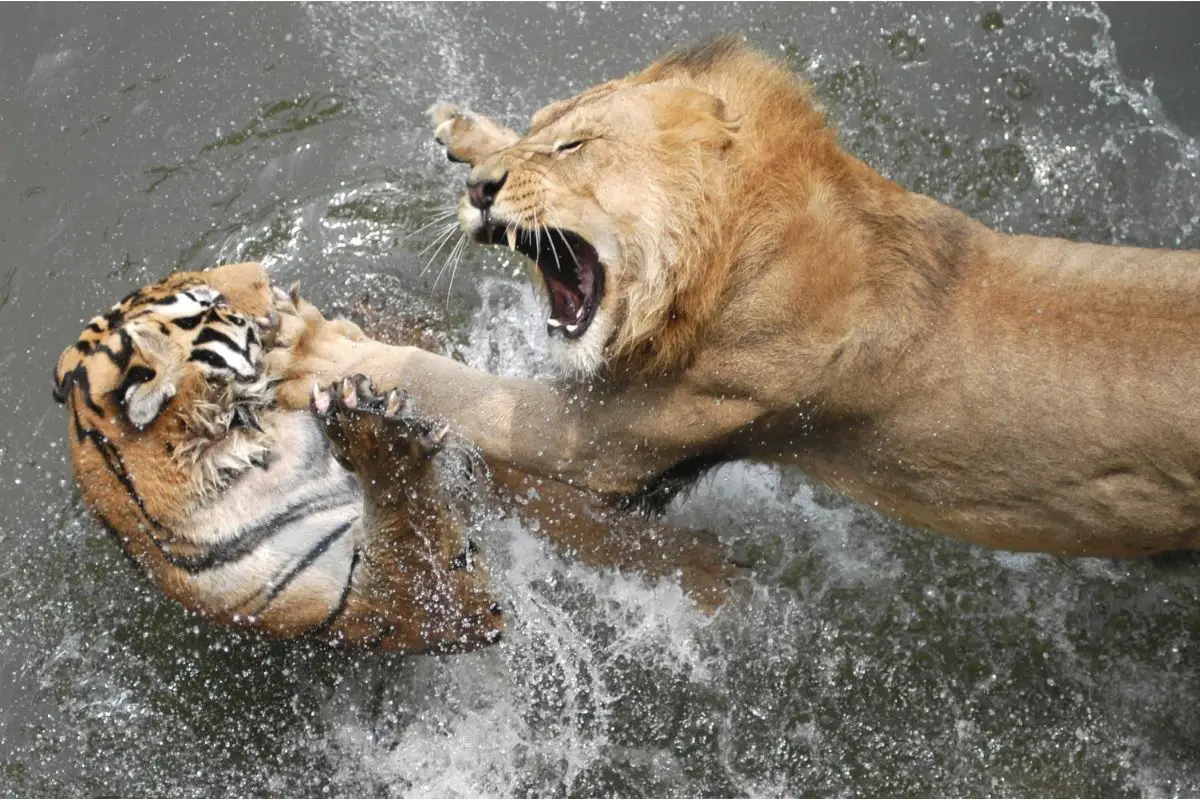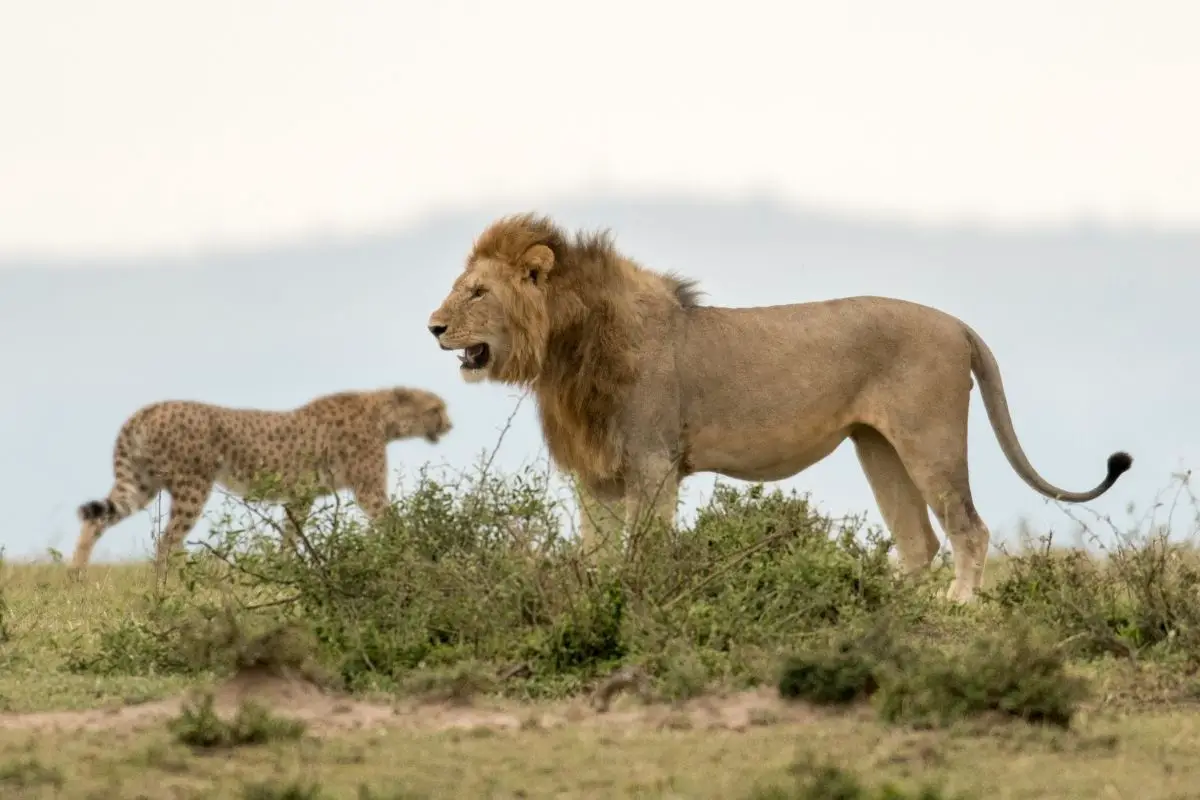Jaguars, leopards, and cheetahs – these three big cats stalk through the pages of literature, myth, and modern media. But telling them apart can be deceptively difficult, especially at a quick glance.
All three species sport tawny coats peppered with black spots and rosettes. They exhibit similar muscular builds designed for ambushing prey. So what sets them apart?
In this comprehensive overview, we’ll examine the key differences between jaguars, leopards, and cheetahs. By comparing their physical attributes, geographic ranges, habitat preferences, hunting strategies, and conservation status, their unique traits emerge.
Learning to distinguish these apex predators grants deeper appreciation of their behavioral and adaptive nuances. Next time you encounter one of the “big three” spotted cats in the wild or a zoo, you’ll have the knowledge to identify them correctly on the spot!
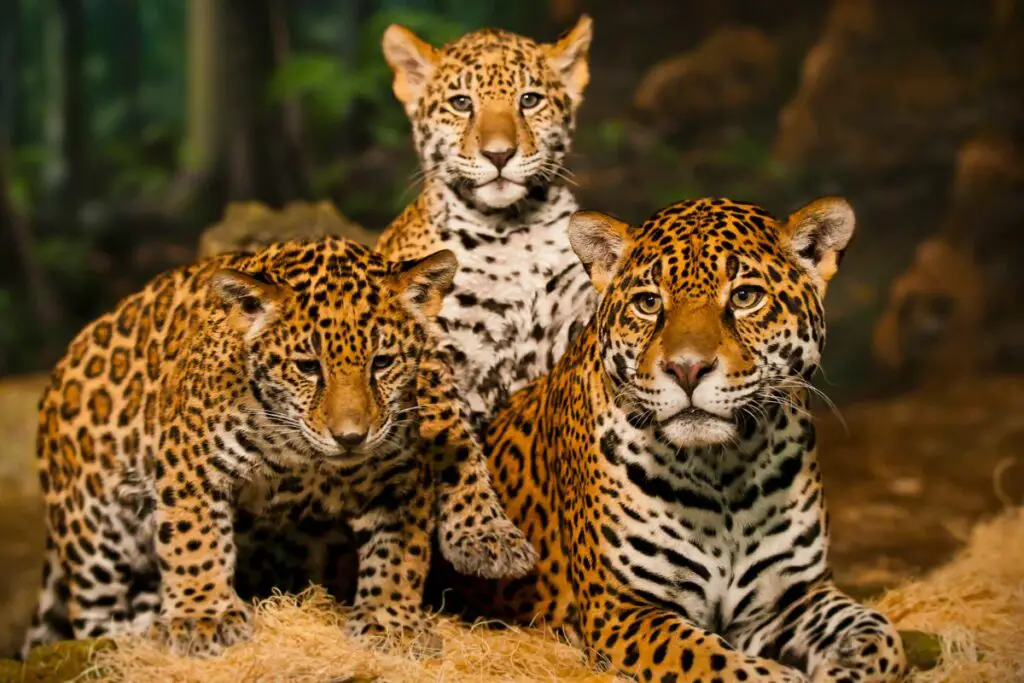
Defining the “Big Three” Wild Cats
Before drawing contrasts, let’s begin with a quick introduction to each species:
Jaguar
The jaguar (Panthera onca) is the largest cat in the Americas and third largest of the big cats worldwide after the tiger and lion. These opportunistic apex predators stalk swamps, rainforests, and grasslands from Mexico to Argentina.
Jaguars are powerfully built with muscular limbs and a deep chest ideal for wrestling large prey. Their distinctive rosettes feature internal spots and black edges.
Leopard
Smaller and more lithe than the jaguar, the leopard (Panthera pardus) is the most widespread big cat. Leopards inhabit dense forests, savannahs, deserts, and mountains across large swaths of Africa and Asia.
Adept climbers, they thrive in rainforests. Their rosettes lack inner spots and sport blurred edges. Underparts are often lighter colored with solid spots.
Cheetah
The world’s fastest land animal, the cheetah (Acinonyx jubatus) relies on extreme speed and agility to run down prey in open grasslands across pockets of eastern and southern Africa.
Long limbs, a flexible spine, and specialized muscles allow short bursts hitting 70 mph. A teardrop shape under each eye enhances daytime vision. Solid round spots cover their tan coats.
Those brief summaries provide context on where each cat naturally occurs and how they are adapted. Now let’s dive deeper into the key traits that truly distinguish jaguars, leopards, and cheetahs.
Size Differences of Jaguars, Leopards, and Cheetahs
One of the most identifiable differences is their disparate sizes, with jaguars being significantly stockier and larger than the other two species. Here’s how the “big three” compare in average size and weight:
Jaguars: The Stockiest and Largest
Jaguars range from 125 to 250 lbs, with an average weight of 200 lbs for males and 150 lbs for females. They reach up to 5 to 6 feet long, plus a tail length of 2 to 3 feet. This makes jaguars the largest and heaviest of the three big cats. Their stocky build is supplemented by incredible pure muscle strength and bite force, which allows them to take down larger prey and crush bones with their jaws.
Leopards: Medium-Sized and Versatile
Leopards typically weigh between 90 and 165 lbs, with males averaging 100-150 lbs and females 60-100 lbs. They stretch 5 to 6 feet long with a 2 to 2.5 foot tail. This makes leopards medium-sized among the big cats, but their versatile build allows them to adapt to a wide range of habitats and prey species.
Cheetahs: The Smallest and Lightest
Cheetahs are the smallest of the trio, weighing just 80 to 150 lbs. Males average about 130 lbs compared to roughly 110 lbs for females. Length reaches 4.5 to 5.5 feet plus a 2.5 to 3 foot tail. Despite being the smallest and lightest of the three, cheetahs are the fastest land animals, capable of reaching speeds up to 60-70 mph in short bursts.
| Size and Weight | Jaguar | Leopard | Cheetah |
|---|---|---|---|
| Weight | 125 to 250 lbs | 90 to 165 lbs | 80 to 150 lbs |
| Average Weight (Males) | 200 lbs | 100-150 lbs | 130 lbs |
| Average Weight (Females) | 150 lbs | 60-100 lbs | 110 lbs |
| Length | 5 to 6 feet | 5 to 6 feet | 4.5 to 5.5 feet |
| Tail Length | 2 to 3 feet | 2 to 2.5 feet | 2.5 to 3 feet |
Note: While cheetahs and leopards have similar weights, jaguars outweigh even the largest leopards by over 50 lbs on average.
So while cheetahs and leopards weigh in similarly, jaguars outweigh even the largest leopards by over 50 lbs on average. Understanding these size differences is crucial for appreciating the ecological roles and adaptations of these magnificent creatures.
Coat Differences of Jaguars, Leopards, and Cheetahs
Camouflaging coat patterns help identify the three cats at a glance once you know what to look for in their markings.
Jaguars: Large Black Rosettes
Jaguars display large black rosettes on a tawny yellow or reddish-orange background. Inside each rosette are smaller solid black spots. The edges of the rosettes are thick and less distinct, sometimes broken into small dots.
The belly and throat is white or cream colored. This pattern helps jaguars blend into their forested habitats, making them stealthy hunters.
Leopards: Deep Black Rosettes
Leopards exhibit a tawny or sandy yellow base coat marked with deep black rosettes. Unlike jaguars, their rosettes lack inner spots and have dark definite edges. Portions of their underparts are white with solid black spots.
This coat pattern helps leopards camouflage in a variety of habitats, from grasslands to forests.
Cheetahs: Solid Round or Oval Black Spots
In contrast to the rosette patterns, cheetahs have a plain tawny yellow coat blanketed in solid round or oval black spots measuring 1 to 2 inches across.
Their spots are evenly distributed, unlike the random rosettes of jaguars and leopards. Tear stripes accent the eyes. This coat pattern helps cheetahs blend into the grasslands where they typically hunt.
The spotted coat patterns help camouflage the big cats when hunting prey and hide them in vegetative cover.
But the subtle differences in spot shape, edges, and distribution are key to distinguishing species. Understanding these differences is crucial for identifying these big cats in the wild and for conservation efforts.
Head Differences of Jaguars, Leopards, and Cheetahs
Examining the head region reveals more nuanced differences between the trio.
Jaguars: Broad Head and Powerful Jaws
Jaguars have a broad head structure with powerful jaws and unusually large canines. Jags have the strongest bite of any big cat, able to chomp down with a force of 1,500 pounds per square inch.
This powerful bite allows jaguars to pierce through the skulls or shells of their prey, a capability unique among big cats.
Leopards: Long Canines and Slim Whisker Tufts
Leopards possess the longest canines relative to their skull size of the big cats. Their skull is more elongated than the heavyset jaguar. Signature slim whisker tufts emerge from their cheeks.
These long canines and slim whisker tufts are characteristic features of leopards and are crucial for their hunting style, which often involves ambushing prey and delivering a single, powerful bite to the neck.
Cheetahs: Tear Stripes and Small Rounded Head
In contrast to the other two, cheetahs have characteristic black “tear stripes” that run from the inner corner of their eyes down to the mouth. They have a small rounded head with smaller jaws compared to jaguars and leopards.
These tear stripes help reduce glare from the sun and focus better on their prey during high-speed chases.
When observed closely, face and skull proportions offer telltale identification cues specific to each species. Understanding these differences is crucial for researchers, conservationists, and anyone interested in the natural world.
Vocalization Differences of Jaguars, Leopards, and Cheetahs
These big cats all possess unique vocal repertoires that set them apart when heard.
Jaguars: Roars, Grunts, and Cough Barks
Jaguars produce loud roars, but also communicate via raspy grunts, growls, and a series of cough-like hoarse calls known as “cough barks.” These various vocalizations are essential for communication between jaguars, especially during mating season or when establishing territory.
Leopards: Cough Barks, Snarls, and Nocturnal Calls
Leopards make a raspy cough bark sound similar to jaguars along with snarls, grunts, and other guttural vocalizations. Their piercing nocturnal calls include rasping shrieks and howls. These calls are crucial for communication between leopards, especially during the night when they are most active.
Cheetahs: Chirps, Growls, and Chortling Purrs
Cheetahs vocalize with high-pitched chirps, growls, and distinctive purrs that take on a distinctive chortling quality. They cannot roar like jaguars or leopards. These vocalizations are essential for communication between cheetahs, especially between mothers and their cubs.
While all three cats communicate in the lower tonal ranges, precise patterns and sound qualities of their calls help differentiate species when within earshot but hidden from view. Understanding these vocalization differences is crucial for researchers and conservationists working to protect these magnificent creatures.
Distribution and Habitat Differences of Jaguars, Leopards and Cheetahs
Jaguars, leopards, and cheetahs inhabit markedly different natural environments. This dictates key adaptations:
Jaguar Habitats Jaguars prowl rainforests, seasonally flooded swamplands, scrubland, and open grasslands mainly in South and Central America. They range as far north as Arizona and New Mexico in the U.S.
Their natural habitat concentrates in the Amazon rainforest region. Jaguar’s stocky build and flexible diets allow them to thrive in dense forested terrain and aquatic areas where they hunt larger prey.
Leopard Habitats African leopards live across sub-Saharan Africa in grasslands, woodlands, deserts, mountains, and rainforests. In Asia leopards occupy forested areas throughout India and south-central China.
Their sleeker physique makes them well suited to rocky high country and rainforest canopies. Leopards can inhabit a wider range of habitats than the other two cats.
Cheetah Habitats Cheetahs almost exclusively live in the open grassland plains and arid shrub regions of eastern and southern Africa. A small isolated population exists in Iran.
Their rangy build supports bursts of extreme speed needed to run down gazelles and smaller herbivores on the African plains according to their specialization. Dense rainforests don’t suit their hunting ecology.
The spaces carved out by each species provide clues into how their bodies and predatory instincts align with habitat pressures.
Population and Conservation Status Differences of Jaguars, Leopards and Cheetahs
Unfortunately human impacts have caused concerning declines for all three wild cats, but their current population and conservation status differ:
- Jaguars are estimated at roughly 170,000 remaining individuals as of 2022. They are considered Near Threatened on the IUCN Red List but Endangered within the U.S. Habitat loss is the major threat.
- There are likely less than 15,000 Cheetahs left globally which classifies them as Vulnerable. Only about 7,500 breeding adult cheetahs remain. Habitat fragmentation hampers breeding.
- Leopards have the widest distribution and are most adaptable, numbering around 700,000. They remain Near Threatened overall but face extreme regional declines.
All three cats warrant increased conservation action. But jaguars and cheetahs are more vulnerable species currently that require proactive protection efforts to prevent their numbers from slipping to critical levels.
Unique Attributes of Jaguars, Leopards, and Cheetahs
Beyond differences in size, patterns, habitats, and status, a few special traits further distinguish these three wild cats.
Cheetah: The Non-Roaring Big Cat
The cheetah is the only big cat that cannot roar. Over the course of evolution, its vocal cords adapted for blurting out short bursts of air quickly to aid breathing during sprints. This adaptation is crucial for the cheetah, as it is the fastest land animal and needs to optimize its respiratory system for high-speed chases.
Cheetah: The Cat with Semi-Retractable Claws
The cheetah is also the only cat with a flexible semi-retractable claw. This specialized claw on their front feet acts like cleats when running, providing unmatched traction and speed. This adaptation is another reason why the cheetah is the fastest land animal, as it allows the cheetah to grip the ground better during high-speed chases.
Jaguar: The Marine Predator
The jaguar stands apart as the world’s strongest swimming big cat. Its muscular build allows it to dive after and wrestle large caiman crocodiles and aquatic turtles. This ability to target marine prey is unique among big cats and is a testament to the jaguar’s strength and versatility as a predator.
Knowing these singular characteristics rounds out the identity profiles of each species. Understanding these unique traits is essential for appreciating the diversity and adaptability of these magnificent creatures.
Hunting Strategy Differences of Jaguars, Leopards and Cheetahs
As predators, jaguars, leopards, and cheetahs rely on distinct hunting techniques tailored to their strengths and environments:
Jaguar Hunting Jaguars employ a stealth ambush style. They creep through dense vegetation until within striking range of prey, then explode from cover and vault onto the prey’s back or neck with their massive paws.
A crushing bite to the skull or spine finishes the hunt. They drag hefty kills into trees or caves to eat undisturbed. Jaguars target larger fare like deer, peccaries, capybara, and domestic cattle.
Leopard Hunting With their exceptional climbing skills, leopards often ambush prey from above down an animal trail or gully. Like jaguars, they stalk close then pounce with force, suffocating prey with a throat bite.
Leopards are able to haul carcasses larger than themselves up into trees using their jaw strength. Stealth and power allow them to successfully target antelope and deer species much larger than themselves.
Cheetah Hunting In stark contrast to the other two, cheetahs rely on pure speed and rapid acceleration rather than stealth or power. They stalk prey in open fields from a distance, then make a sudden targeted sprint from behind to run it down with their blistering speed and agility before the prey has a chance to react or flee.
Tripping with their dew claw aids tackles. Cheetahs mainly target smaller antelopes like gazelles, leveraging their lightning chase speed.
Hunting strategies align remarkably with the environmental niches each is adapted for, and the physical capabilities that equip them best for survival.
Takeaways on Distinguishing the Top Three Spotted Cats
After this comprehensive examination of traits, we can summarize the key points differentiating jaguars, leopards, and cheetahs:
- Jaguars are the largest and stockist in build with the most powerful bite. They feature large rosettes with interior spotting. Most aquatic habitats.
- Leopards exhibit long thin bodies, are strong climbers, and have rosettes without inner spots and cloud-like edges. Success across habitats.
- Cheetahs possess unrivaled land speed thanks to lean legs and flexible spine. Distinct tear stripes and evenly distributed spots. Open terrain specialists.
- Jaguars roar; leopards saw-grunt; cheetahs purr and chirp.
- Jaguars dominate South American tropics; leopards prowl wider Africa and Asia; cheetahs central Africa and isolated pockets.
- All face conservation challenges but cheetahs and jaguars are especially vulnerable.
These crucial points of distinction help avoid the common assumption that any spotted big cat is automatically a leopard or cheetah. Properly differentiating between them grants respect for their unique adaptations and ecological roles.
Next time you come across jaguars, leopards or cheetahs on a safari, in a zoo, or in the media, let these tips help you identify who’s who.
Watch for those giveaway traits like mass and gait, spot and rosette patterns, habitats, vocalizations and more that set each species apart. Getting to know the “big three” celebrated wild cats in all their majestic nuances is a wildlife encounter you won’t forget!
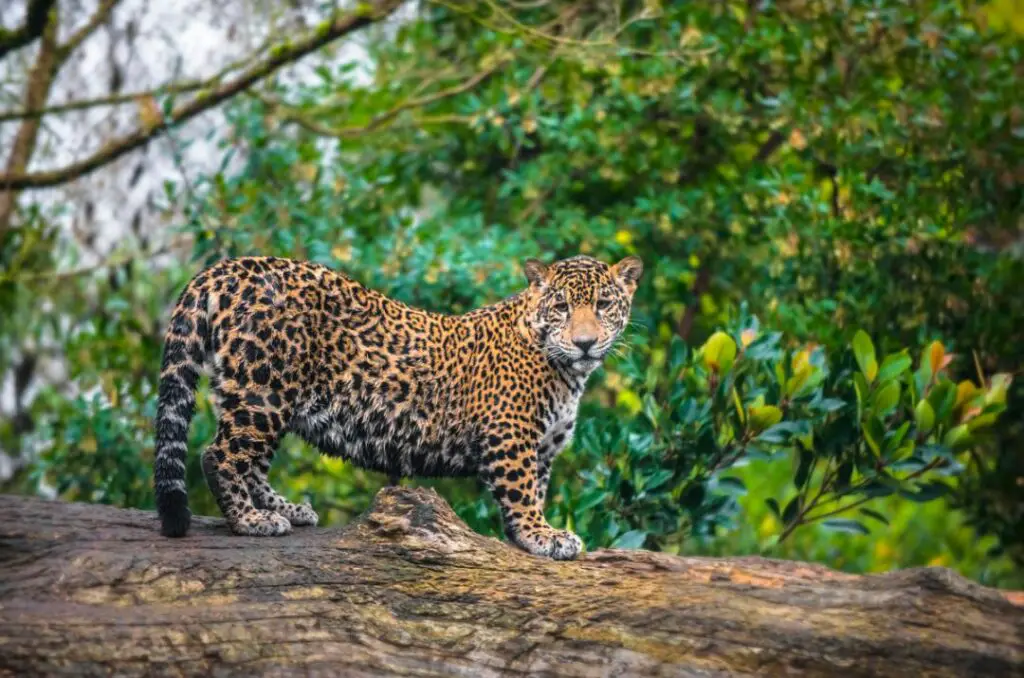
Frequently Asked Questions
Are leopards, cheetahs, and jaguars the same animal?
No, they are three distinctly different animals. Both jaguars and leopards are part of the Pantherus family, but the cheetah is part of the Acinonyx family.
Do jaguars and leopards have different spots?
Yes. While both jaguars and leopards have rosettes, they are different. The rosettes on a jaguar are larger and darker, and often have smaller spots inside them. Leopard’s rosettes are smaller, have thinner borders, and do not have spots in them.
Do cheetahs and leopards have different spots?
Yes. Leopards have rosettes, while cheetahs have true spots. In other words, the markings on a leopard are “spots”, but are made up of spots, rather than being a single black mark.
Are cheetahs bigger than leopards?
Cheetahs are taller than leopards at the shoulder, but are much leaner than leopards, with long legs and a long tail.
How fast can cheetahs run?
Cheetahs can reach speeds of almost 81 miles per hour.
Do jaguars like water?
Unlike most cats, jaguars enjoy being in the water and are very strong swimmers.
How strong are leopard’s jaws?
The jaws of a leopard are thought to be capable of having a biting force of 1,100 lbs
Where can you find leopards?
Leopards can be found in Africa, the Middle East, and Asia. You can find leopards in South Africa, and as far north as parts of Russia.
How many subspecies of leopards are there?
Nine. There are nine subspecies of leopard that are recognized. These include the African leopard, Indian, Arabian, Javan, Persian, North Chinese, Sri Lankan, Indochinese, and the Amur. Melanistic leopards are not subspecies, but mutations.
Is there more than one type of jaguar?
Technically, no. There are a number of subpopulations of jaguars, but not other subspecies.
Do cheetahs roar?
No, cheetahs can’t roar. They primarily chirp, like birds.
Is a leopard or a cheetah faster?
Cheetahs are the fastest land carnivores in the world, reaching speeds of up to 81 miles per hour. Leopards can only run at speeds of around 36 miles per hour.
Which is the biggest, a leopard, jaguar, or cheetah?
The jaguar is the biggest, or heaviest, of these cats. The largest jaguar ever recorded weighed over 300 lbs, though most male jaguars will only reach weights of up to 220 lbs.
- Sink Your Teeth Into This: Analyzing the Powerful Lion Bite Force - September 8, 2023
- Siberian Tigers: Everything You Need To Know - September 4, 2023
- Do Lions Eat Humans? Understanding Lion Aggression and Risks - September 4, 2023


